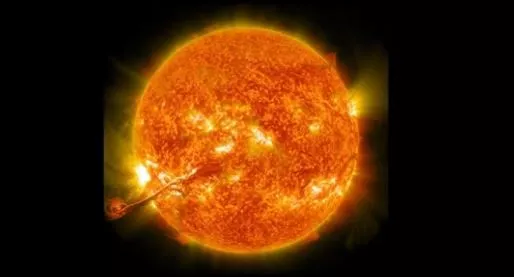.gif)
.gif)

NASA has issued a warning about an anticipated 'perfect storm' set to impact Earth tomorrow. The surge in solar activity, marked by a significant increase in sunspots and the release of hot plasma into space, could lead to geomagnetic storms. These storms have the potential to enhance auroras, making them visible in lower latitudes. NASA's model suggests a possible collision between a coronal mass ejection (CME) and Earth by late November 25. The CME, a massive cloud of plasma ejected from the sun, might result in a geomagnetic disturbance, prompting scientists to closely analyze its path for confirmation.
The heightened solar activity has seen a tenfold increase in sunspots in the past week, with several CMEs launched daily. The potential collision of one of these CMEs with Earth raises concerns about geomagnetic storms, disturbances of the Earth's magnetic field and atmosphere caused by solar plasma. Geomagnetic storms can vary in intensity, classified from G1 (minor) to G5 (extreme) by NOAA. Such storms, though relatively rare, can significantly impact Earth, enhancing auroras and potentially being visible at lower latitudes. Scientists are closely monitoring the situation, awaiting further analysis to confirm the potential impact and intensity of the impending 'perfect storm.'